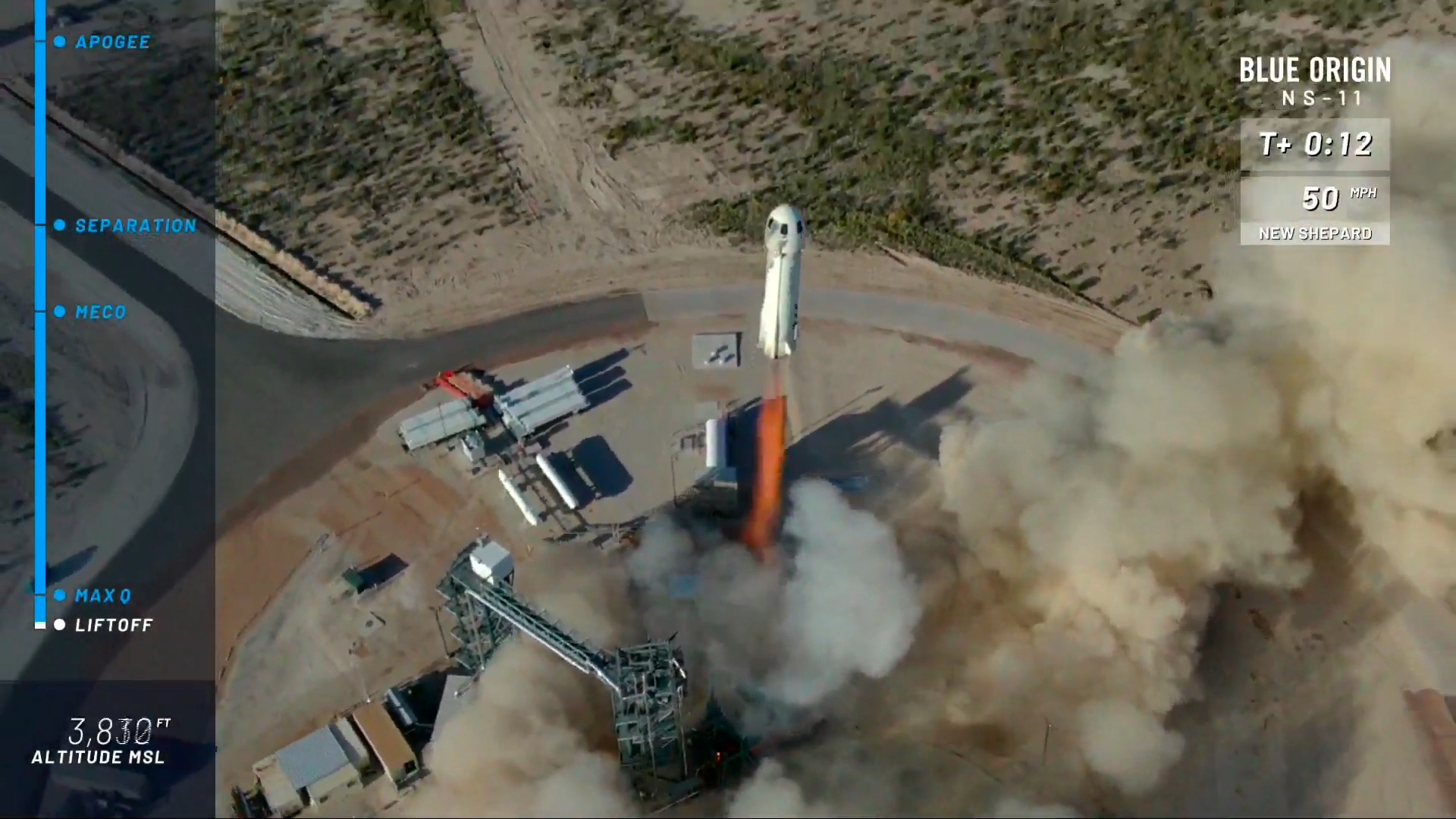Climate Whiplash: A Report On The Impacts On Cities Around The World

Table of Contents
Increased Frequency and Intensity of Extreme Weather Events
Climate change is fundamentally altering weather patterns, leading to a surge in the frequency and severity of extreme weather events in urban areas. These events, ranging from prolonged heatwaves to catastrophic floods and powerful storms, pose significant threats to urban infrastructure, economies, and public health.
Heatwaves and Urban Heat Islands
The phenomenon of urban heat islands, where cities experience significantly higher temperatures than surrounding rural areas, exacerbates the impacts of heatwaves. Buildings, roads, and other infrastructure absorb and radiate heat, creating a microclimate that traps warm air. This effect intensifies heatwave conditions, leading to:
- Increased energy consumption for cooling: Higher temperatures necessitate increased reliance on air conditioning, straining energy grids and contributing to higher electricity bills.
- Heat-related illnesses and mortality: Prolonged exposure to extreme heat can lead to heatstroke, exhaustion, and other life-threatening conditions, particularly among vulnerable populations.
- Infrastructure damage: Extreme heat can cause buckling of roads, damage to power lines, and failure of critical infrastructure systems.
Flooding and Coastal Erosion
Coastal cities are particularly vulnerable to the impacts of climate whiplash, facing increased risks from sea-level rise, storm surges, and more intense rainfall. These factors contribute to:
- Damage to infrastructure: Flooding can damage roads, bridges, transportation systems, and buildings, causing significant economic losses.
- Disruption of transportation: Flooded roads and railways severely disrupt transportation networks, impacting businesses and daily commutes.
- Economic losses: Flooding causes widespread damage to businesses, homes, and infrastructure, leading to substantial financial losses and economic disruption.
- Displacement of populations: Severe flooding can force people to evacuate their homes, leading to displacement and the need for temporary or permanent relocation.
Wildfires and Air Quality
Climate change is increasing the risk of wildfires, particularly in urban peripheries and areas with dry vegetation. These wildfires pose significant threats to:
- Impacts on public health: Wildfire smoke contains harmful pollutants that can cause respiratory illnesses, cardiovascular problems, and other health issues.
- Economic losses from damage and evacuations: Wildfires can destroy homes, businesses, and infrastructure, leading to substantial economic losses and the need for costly evacuations.
- Disruption of daily life: Wildfires can force evacuations, close schools and businesses, and disrupt transportation networks, causing significant disruption to daily life.
Impacts on Urban Infrastructure and Services
Climate whiplash significantly impacts the critical infrastructure and essential services that underpin the functioning of cities. The cascading effects of these disruptions can have far-reaching consequences.
Transportation Systems
Extreme weather events pose significant challenges to transportation networks, including:
- Service interruptions: Flooding, high winds, and extreme temperatures can disrupt rail, road, and air transportation, causing delays and cancellations.
- Increased travel times: Damage to infrastructure and detours can lead to significantly increased travel times, impacting commuters and businesses.
- Economic losses: Disruptions to transportation networks lead to economic losses due to delays in goods delivery, reduced productivity, and lost tourism revenue.
- Safety concerns: Damaged infrastructure can create safety hazards for drivers and passengers.
Energy and Water Systems
Extreme weather events place considerable strain on energy and water systems, leading to:
- Power outages: High winds, flooding, and extreme temperatures can damage power lines and disrupt electricity generation, causing widespread power outages.
- Water shortages: Droughts and increased water demand during heatwaves can lead to water shortages and restrictions.
- Damage to water treatment plants: Flooding and extreme weather can damage water treatment plants, leading to water contamination and disruptions to water supply.
- Increased risk of waterborne diseases: Disruptions to water treatment and sanitation systems can increase the risk of waterborne diseases.
Housing and Public Health
The impacts of climate whiplash on housing stock and public health are profound:
- Displacement of populations: Extreme weather events can damage or destroy homes, forcing people to evacuate and seek temporary or permanent housing.
- Increased homelessness: Damage to housing stock can exacerbate homelessness, particularly among vulnerable populations.
- Spread of infectious diseases: Damage to sanitation systems and displacement can increase the spread of infectious diseases.
- Mental health impacts: Experiencing extreme weather events and displacement can have significant negative impacts on mental health.
Socioeconomic Impacts and Equity Concerns
Climate whiplash disproportionately impacts vulnerable populations within cities, exacerbating existing social and economic inequalities.
Economic Disparities
Climate whiplash intensifies existing economic inequalities, with marginalized communities often bearing the brunt of the impacts:
- Job losses: Disruptions to businesses and industries can lead to job losses, particularly among low-wage workers.
- Increased poverty: Damage to homes and businesses can push families into poverty, and recovery efforts can be slow and unequal.
- Difficulty accessing essential services: Vulnerable populations may have limited access to essential services, such as healthcare and disaster relief.
- Limited access to insurance and disaster relief: Many vulnerable communities lack adequate insurance coverage and access to disaster relief funds.
Social Vulnerability
Factors such as age, income, race, and disability influence vulnerability to climate whiplash impacts:
- Limited access to resources: Vulnerable populations may have limited access to resources needed to prepare for and recover from extreme weather events.
- Increased exposure to risks: Marginalized communities are often located in areas with higher exposure to environmental hazards.
- Difficulty in adapting to changing conditions: Vulnerable populations may have limited capacity to adapt to the changing conditions brought on by climate whiplash.
Migration and Displacement
Climate whiplash can lead to migration and displacement within and between cities, creating additional challenges:
- Strain on urban services: Increased populations put a strain on urban services, such as housing, healthcare, and infrastructure.
- Increased competition for resources: Migration can increase competition for resources, exacerbating existing tensions.
- Social unrest: Displacement and competition for resources can contribute to social unrest and conflict.
Conclusion
Climate whiplash poses a significant and growing threat to cities around the world. The increasing frequency and intensity of extreme weather events are causing widespread damage to infrastructure, disrupting essential services, and exacerbating existing social and economic inequalities. Addressing climate whiplash requires a multifaceted approach encompassing mitigation efforts to reduce greenhouse gas emissions and adaptation strategies to build more resilient urban environments. We need immediate action to implement sustainable urban planning, invest in climate-resilient infrastructure, and develop equitable adaptation policies to protect vulnerable populations. Understanding the impacts of climate whiplash is crucial to building a more sustainable and resilient future for our cities. Let's work together to mitigate the effects of climate whiplash and create more resilient urban landscapes. Developing comprehensive climate whiplash response plans is essential for the survival and prosperity of our cities.

Featured Posts
-
 Kanye West And Bianca Censori Public Perception And Fan Commentary
May 28, 2025
Kanye West And Bianca Censori Public Perception And Fan Commentary
May 28, 2025 -
 E5 000 Euro Millions Win Becomes E255 000 Irish Players Unexpected Fortune
May 28, 2025
E5 000 Euro Millions Win Becomes E255 000 Irish Players Unexpected Fortune
May 28, 2025 -
 Blue Origins New Shepard Launch Scrubbed Due To Technical Issue
May 28, 2025
Blue Origins New Shepard Launch Scrubbed Due To Technical Issue
May 28, 2025 -
 Bond Market Instability Understanding The Current Crisis
May 28, 2025
Bond Market Instability Understanding The Current Crisis
May 28, 2025 -
 Hanif Faisol Penanganan Sampah Di Bali Inspirasi Untuk Indonesia
May 28, 2025
Hanif Faisol Penanganan Sampah Di Bali Inspirasi Untuk Indonesia
May 28, 2025
Latest Posts
-
 Stock Market Valuation Concerns Why Bof A Remains Optimistic
May 30, 2025
Stock Market Valuation Concerns Why Bof A Remains Optimistic
May 30, 2025 -
 Addressing Investor Concerns Bof As Analysis Of Current Stock Market Valuations
May 30, 2025
Addressing Investor Concerns Bof As Analysis Of Current Stock Market Valuations
May 30, 2025 -
 Bof As Take On Stretched Stock Market Valuations A Guide For Investors
May 30, 2025
Bof As Take On Stretched Stock Market Valuations A Guide For Investors
May 30, 2025 -
 Understanding Stock Market Valuations Bof As View And Investor Implications
May 30, 2025
Understanding Stock Market Valuations Bof As View And Investor Implications
May 30, 2025 -
 High Stock Market Valuations A Bof A Perspective For Investors
May 30, 2025
High Stock Market Valuations A Bof A Perspective For Investors
May 30, 2025
